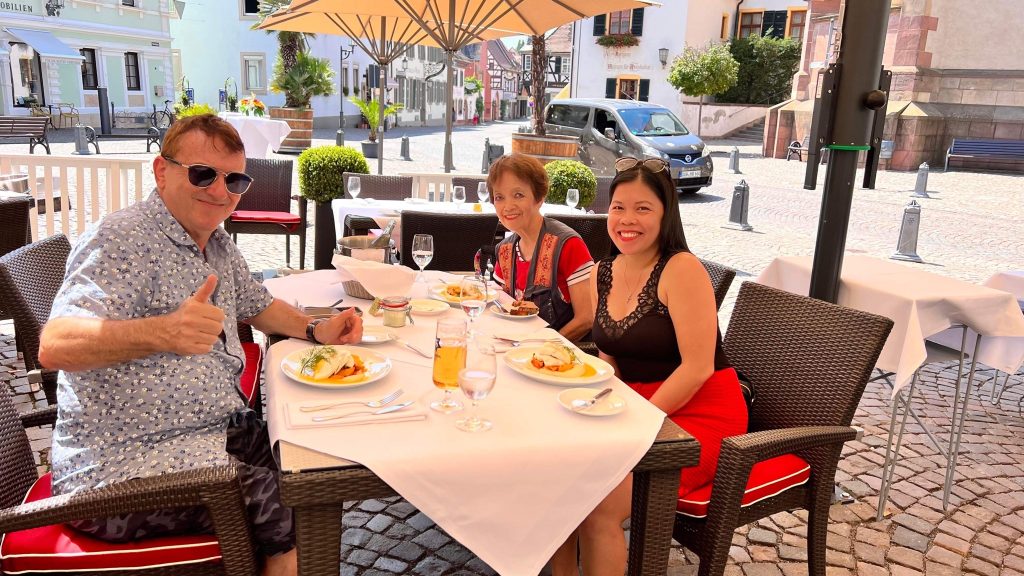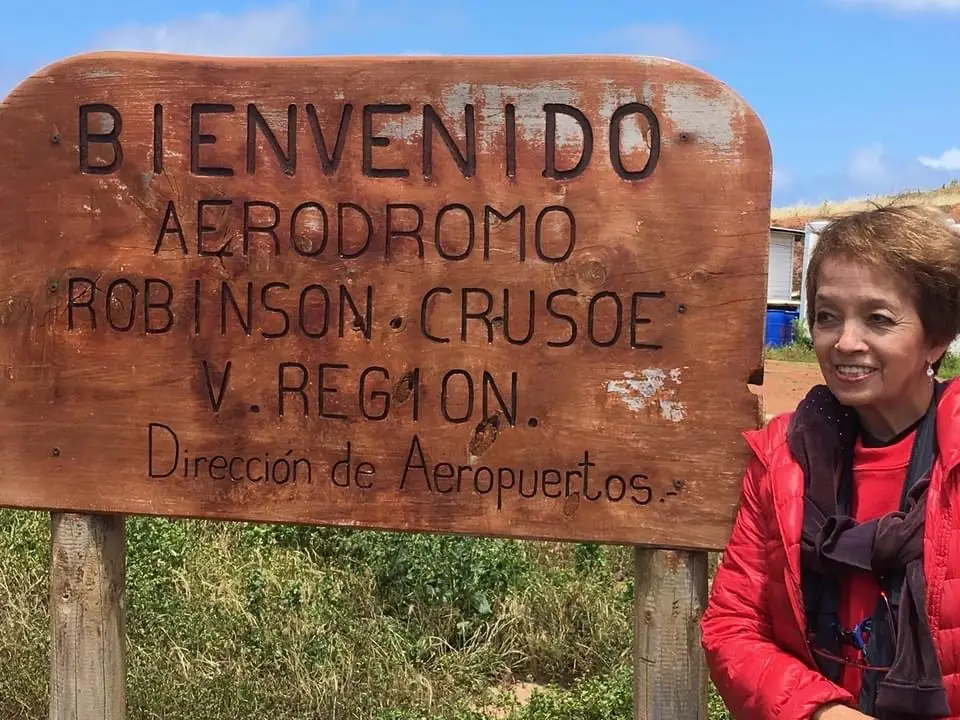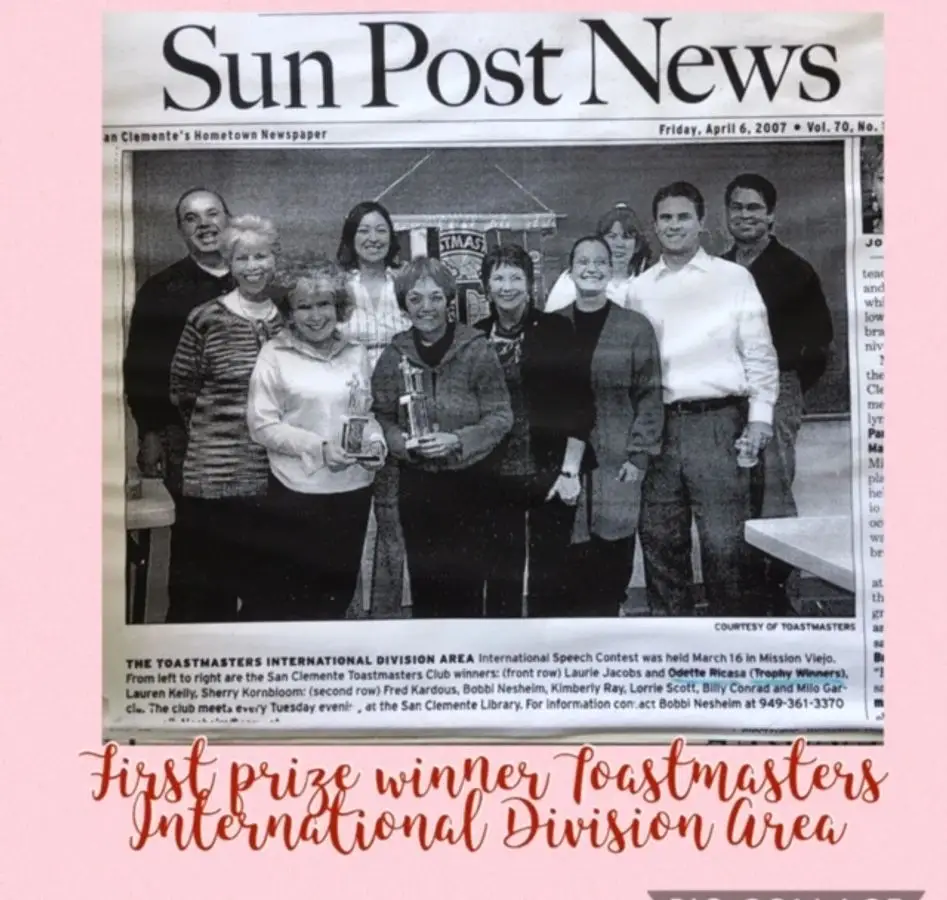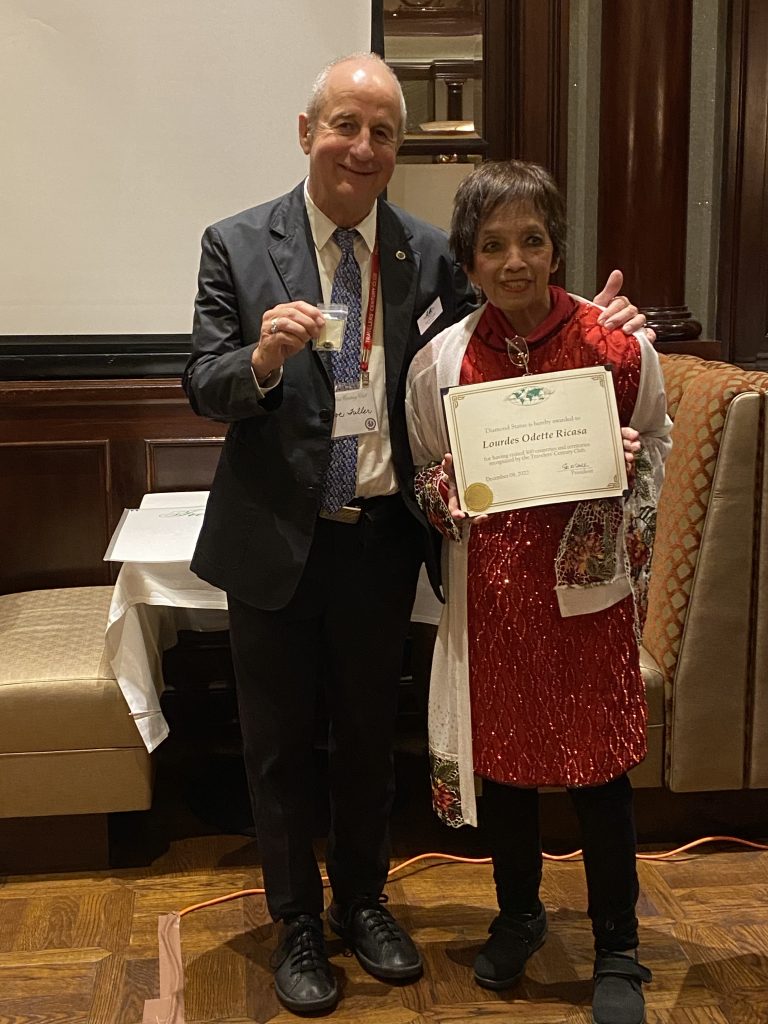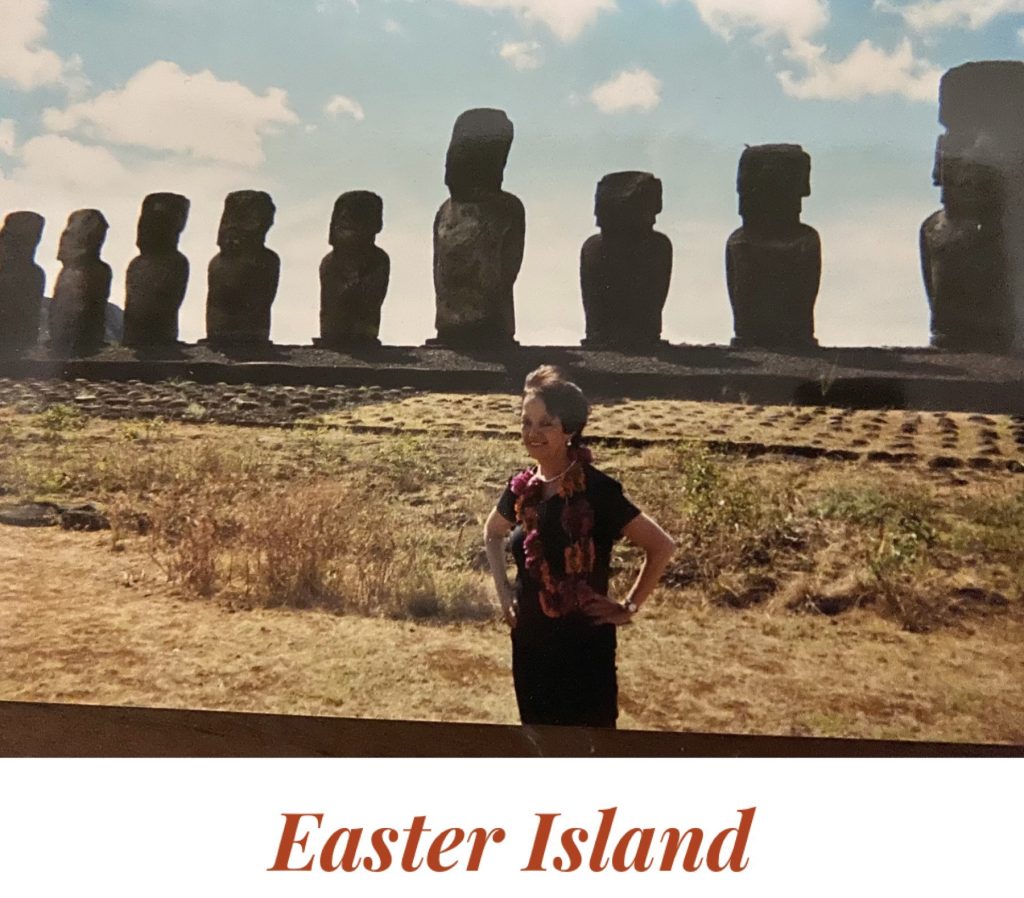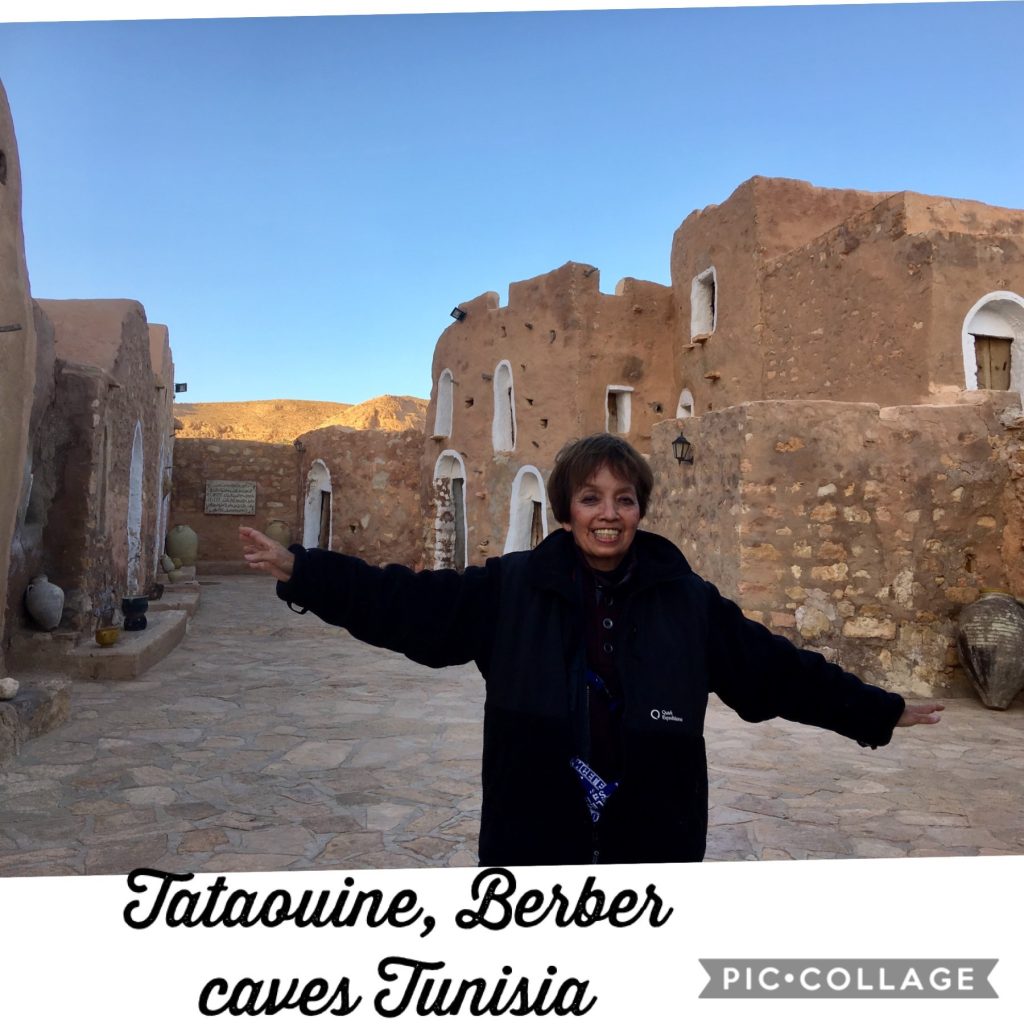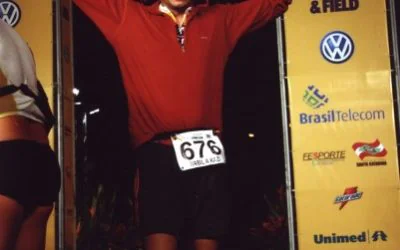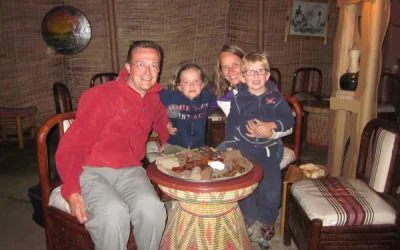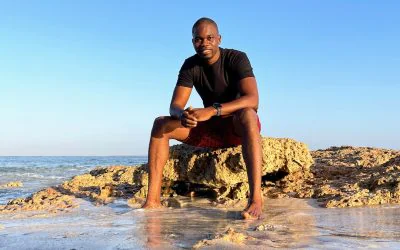Lourdes Odette Ricassa is an adventurous traveller who never let her humble beginnings hold her back. Born and raised in the Philippines, she developed a fascination for Geography during high school and college. Despite financial constraints, she dreamed of travelling to far-off lands like America.
In 1971, she made her dream a reality and moved to the Bronx, New York, where she landed a job at Gimbels Department Store. Her thirst for adventure only grew from there, and she went on to explore nearby states, Canada, and even Mexico. Her journey proves that with determination and perseverance, anything is possible.
Odette, tell us a little about early life and how your love for travel developed
I was born and raised in the Philippines. During my high school and college days, my favourite subject was Geography. I cut out big red apple trees and orange trees from printed magazines.
I was fascinated when our teacher talked about the four seasons, the snow-covered mountains, children building snowmen, the autumn leaves of orange, yellow and red, the reindeer crossing the highway, the sand dunes of the Namibian desert, and the pyramids of Egypt. We did not have much money then. But I told my dad: “One day I will go to America”.
1971 – arrived and lived in the Bronx, New York. My brother, Rey took me in. We were 11 persons in a 2-bedroom apartment. I slept in a folded cot in the living room. I landed a bookkeeping job at Gimbels Department Store, with a gopher sideline job. On long weekends, I took the overnight buses to save Hotel stays. The first destination was Montreal, Canada, taking day tours. Then to nearby states, Rhode Island, West Virginia, Martha’s Vineyard, Cape Cod, etc.
I was invited by my sister-in-law who lived in Mexico City. Took a flight to Acapulco, Taxco etc. I was hooked on following my dreams. After 10 months, moved to California. I worked with the Los Angeles Unified School District as a Systems Analyst. And managed our real estate office, Asian American Realty.
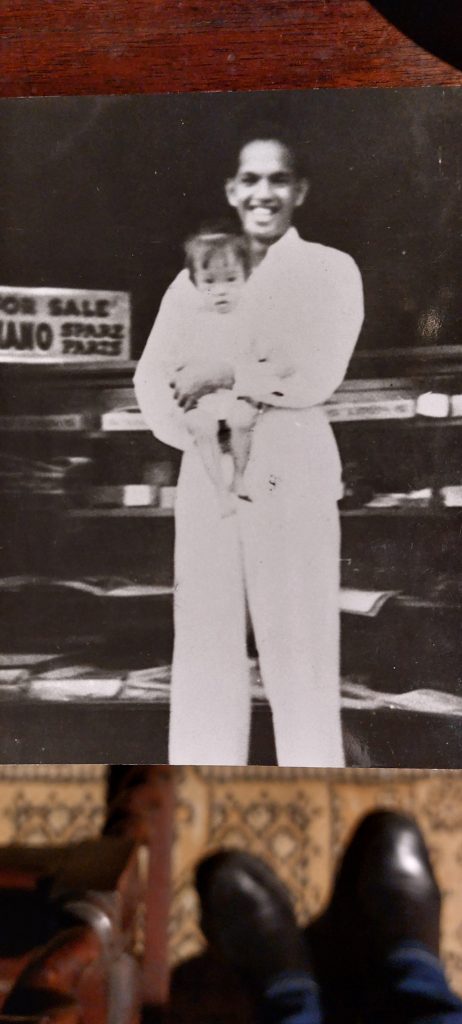
Your website shows your paintings as an artist and motivational speaker, tell us about that.
While I was in grade school, I loved to doodle and draw. When I arrived in the USA, I had to find work and earn money. I had a double job. I worked 7 days a week meanwhile art and speech were put on the back burner. My daughter got a job as an art instructor with Mission Renaissance School in Pasadena. I started taking lessons. Lessons started with drawing lines and circles with pencil, progressing to drawing props lined in the Art cabinet.
I studied all forms of media from pastel chalk, charcoal, watercolour, oil on canvas, and more. We studied the techniques of famous artists like Edgar Degas and his Examen de Dance and Ballerinas, Toulouse Lautrec, Pablo Piccaso’s Museum in Barcelona, Van Gogh in Amsterdam and Salvador Dali in Figueres, Spain.
I was in awe at the Hermitage Museum in Russia in 1985, it was called Leningrad then. As a student, I was given a 40% discount on enrollment fees because my daughter was an art instructor. I studied the Arts from 1987 to 1992.
I have always wanted to improve my speaking skills. I joined the Toastmasters Club in San Clemente, CA. I attended weekly meetings for four years. There was a Division Contest in South Orange County, El Toro, Mission Viejo, San Juan Capistrano and San Clemente. I practised my speech day and night making sure to end in 9 -1/2 minutes, right before the red light showed.
I won a first prize!!! I have been invited to San Clemente Tritons High School to give a motivational speech, and several more, including the Prince Andrew School on the remote island of St. Helena, the Kamenge Youth Center in Bujumbura, Burundi, and James Au of Brazzaville, Republic of Congo.
Now turning to travel. What motivated you to visit every country in the world?
I was on a flight when the lady sitting next to me mentioned TCC, the Travelers Century Club. I counted the countries I visited and wow I was close to 100 countries. I filled out my application form and paid for my membership. From then on, I was addicted and followed the TCC country list.
What do your family and friends think about your endeavor?
Family First is my motto. Family and friends understand my passion for travel. They know my destination each time I leave. Sometimes they forget, especially if it is a remote island or an African country. When friends ask my kids, “Where is your mom?” They answer she is on a remote island; she will email us and send photos.
It seems that reaching 193 UN is now a thing and many young people are aiming at this, competing at a fast pace and young age. What is your take on this?
I totally support travellers reaching and aiming 193 at a fast pace. The pandemic taught us a big lesson. We could not travel for 2 years. Now there are terrorists and serious civil and political unrest.
It is best to see a place for a short time than not seeing it at all. If time allows, you can travel to the same place again at a relaxed pace. As of this writing, Turkmenistan and Easter Island are still closed to tourists.
Now, tell us a travel story of yours that really left a mark on you.
I usually know people who live in the city or country where I’m travelling. My contact in Liberia was Betty Duhaylungsod, a Filipina who works at the United Nations as a counsellor in Monrovia, Liberia. I introduced myself as having travelled to 249 countries and will stay 4 nights in a hotel.
On September 26, 2013, to my surprise, Betty picked me up at my hotel and brought me to the 17th PCL contingent compound. As soon as we got out of the van, there was a band playing at the Mabuhay Hall, with a huge banner: Welcome Odette Ricasa, World Traveler 249 countries.
We marched on to the Banquet Hall. Ceremonies and introductions were made for 35 people. An array of Filipino dishes with roasted pig, noodles, egg rolls, and rice cakes were served. Photo shoots, dancing, and karaoke singing followed. Coronel Fidel Igmedio Cruz was my bodyguard. The party ended almost at midnight.
The next day, Mr Cesar Hawthorne Binag, Deputy Police Commissioner came to see the lady who has travelled to so many countries. We took pictures. He wanted to show and inspire his son who plays the piano that travel is educational. My story as a solo traveller inspired him.
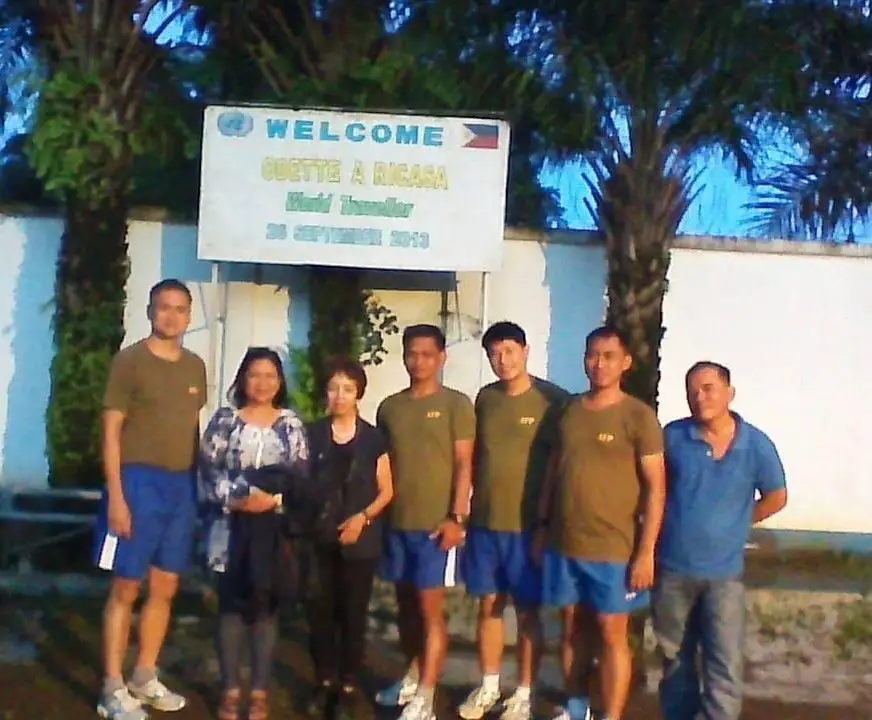
Which countries have you been to so far that surprised you the most and why?
Holy cow! The Mundari tribes use the cow’s urine as hair dye. They prepare themselves and their cows for grazing which will last much of the day. In their free time, they practice wrestling in preparation for large, fun ceremonies.
After picking up the dung, kids and teenagers spend time flattening the mud, organizing the dung piles strategically, and cleaning up. In the afternoon, there’s smoke as far as the eye can see. The Mundari cleverly use the cow dung as a source of smoke – which protects the cattle (and themselves) from insects.
The first thing they wanted to do is to shake my hand. I was hesitant at first due to Covid but eventually shook their hand. Then they wanted to have photos taken and eagerly waited to see them, speaking in their language about how beautiful we all look. They love seeing themselves with their cows on your photo roll.
The Mundari were the most friendly and engaging. They allowed us to immerse ourselves in their culture and way of life. The tour was expensive at 1,400 USD per day without accommodations. I stayed in a hotel. I was afraid to sleep in a tent because there were scorpions. Urine is also used as an antiseptic for cuts and hair dye (mixed with dung ash). Blood is used for ceremonies, mixed with milk.
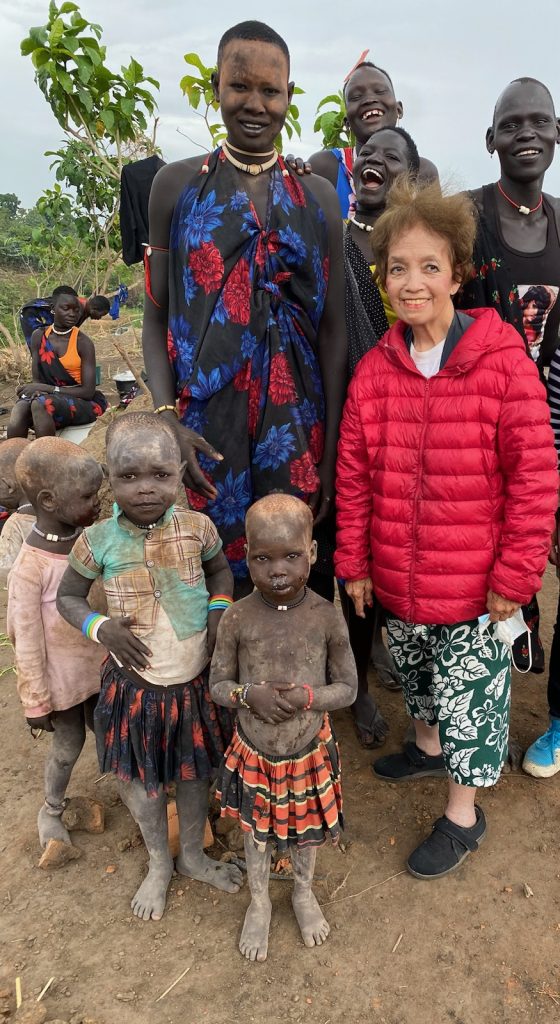
What is your general style of travel?
I travel with an open heart, often listening to stories of families. I slept in the caves of Guadix Spain, dormitories in Helsinki, Finland, safari tents in Victoria Falls, Zimbabwe, Russian apartments in Kyiv, Ukraine, and stayed with families in Almaty, Kazakhstan and Bishkek, Kyrgyzstan.
One that stayed in mind for a long time was the underground Berber villages in Matmata, Tunisia. Similar to beehives, each ksar is composed of a series of chords- superimposed on one another some as high as 8 stories. The region is scattered with these strange but magnificent monumental ksars from ancient times. I slept at the location where the original Star Wars movie was filmed. I always bumped my head on the ceiling of the cave.
You seem to have a very socially aware approach to your travels. Does that set you apart from other travelers you met?
I make it a point to visit a school. The innocent faces of the children show their eagerness to learn and see what is out there. The teacher actually holds a class for 5 minutes eg: Solving Math problems. I ask permission to take photos and the first names of the students and they all jump in. What a precious souvenir.
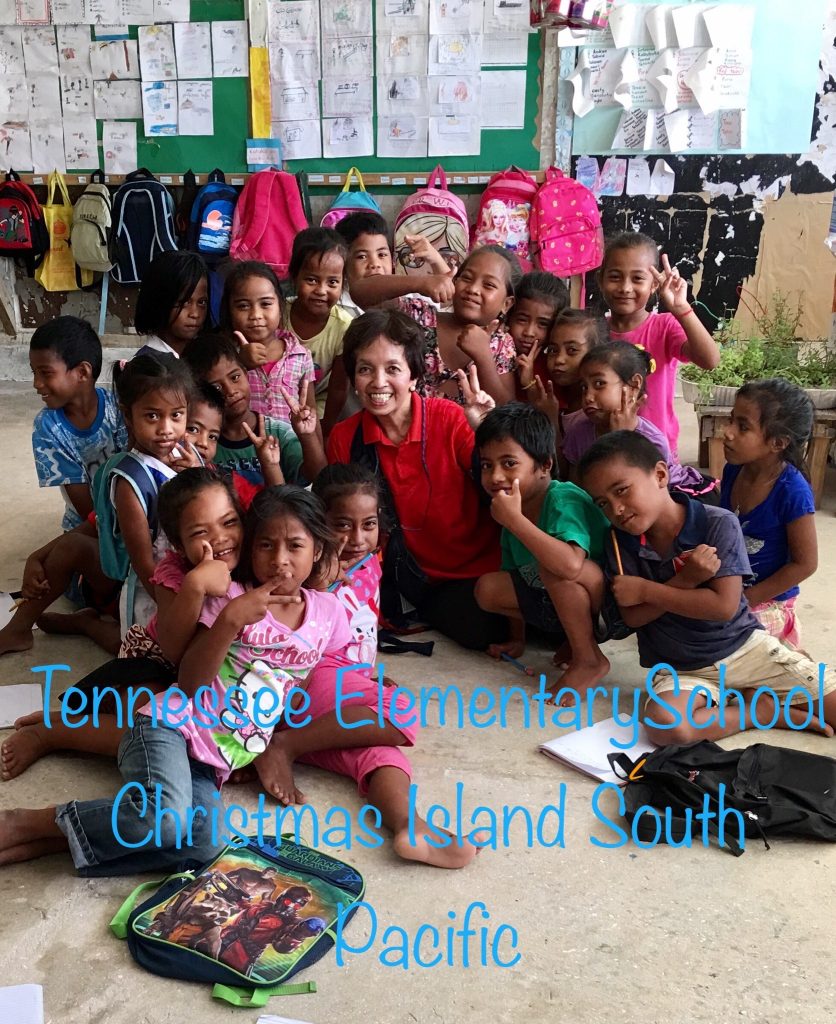
So what are your travel aims in the next six months?
March – to Panama – to attend the 4th NomadMania Conference.
April – May – am going to the French Polynesia Islands of Tahiti (my second time) and to the Austral islands of Tubuai, Mataura, and Raivavae.
June or July – Montpelier, France. During the pandemic, I joined a contest announced by Jean-Luc Turlare of the Servas organization. Out of 280 artists all over the world, my entry was chosen, a collage, titled “Doorway to Peace”. A book called “Anthropology of Colors” was published. I am featured on pages 99 – 101. It was going to be displayed in the museum of the Samara University in Russia. Since there is a conflict with Ukraine, my artwork is in Jean-Luc Turlare’s studio.
September – Socotra – after the monsoon season
Finally our signature question: If you can invite any 4 people from any period in human history to dinner who would you guests be and why?
1) Salvador Dali is most famous for his paintings and his Surrealist art, but he also wrote nine books between 1938 and 1978. These books included everything from non-fiction essays to art criticism to poetry.
A Spanish Surrealist painter and printmaker known for exploring subconscious imagery, his most famous painting is The Persistence of Memory (1931), depicting limp melting watches. I would ask him about his books on poetry and how he chose his subjects for paintings. I went to his house in Portlligat, a small village near Cadaques and his museum in Figueres, Spain.
2) Amelia Mary Earhart was an American aviation pioneer and writer. Earhart was the first female aviator to fly solo across the Atlantic Ocean.
Amelia Earhart wrote diaries of her solo flight. What made her so brave flying solo to far-flung places?
3) Jane Goodall – chimpanzees scientist. Dame Jane Morris Goodall is an English primatologist and anthropologist. She is considered the world’s foremost expert on chimpanzees, after 60 years of studying the social and family interactions of wild chimpanzees. I admire her observation that chimpanzees have human brain thinking. She was featured in the National Graphic – she emphasized that she might soon leave this earth and was very concerned about who will continue her work.
4) Thomas Buechler. For five years Thomas has been tracking my whereabouts and correcting my mistakes, especially attaining 470 regions. 🙂 At a young age he fell in love with my mother country, the Philippines.
He is now married to Vhang Soledad Buelcher, a sweet, always smiling Pinay. Thomas made me relive memories from long ago when the only guide we had was at times from the books and the folded maps we bought at gas stations. There were no cell phones. I would go to the Post office and be assigned a booth. Then, I paid the minutes used to the manager. My camera was an old Fujifilm.
